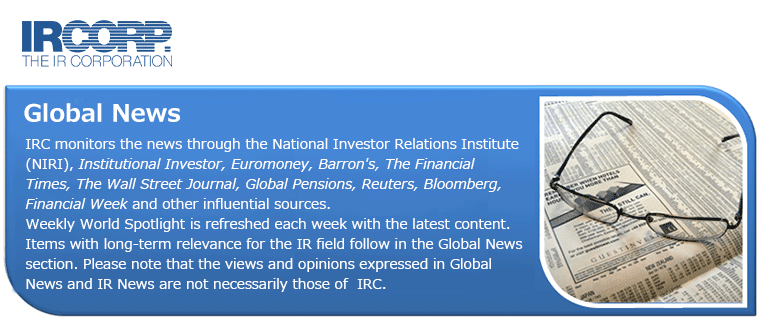New York Times (November 4)
Fed Chairman Jerome Powell announced a tapering of stimulus programs, but he did not “lay the groundwork for higher rates.” That doesn’t mean “the era of near-zero rates will last anything close to as long as it did after the global financial crisis,” but if the current inflation surge “proves something other than temporary, Mr. Powell’s decision to stick to his guns” on interest rates “will loom as a missed moment to join other English-speaking countries in using monetary policy to try to stamp it out.”
Tags: Fed, Global financial crisis, Inflation, Interest, Monetary policy, Near-zero, Powell, Rates, Stimulus, Surge, Tapering
Institutional Investor (November 23)
“After the global financial crisis of 2008-’09, a burgeoning gap in financing for long-term investments pushed many governments to take matters into their own hands. In fact, 17 new strategic investment funds have launched since 2008.” So far, these funds have received little scrutiny, but a recent World Bank study now suggests that these SIF’s “can promote economic growth” while delivering viable commercial returns: fulfilling their so called double-bottom-line mandate.
Tags: Commercial returns, Double-bottom-line mandate, Economic growth, Financing, Global financial crisis, Governments, Long-term investments, SIF, World Bank
Bloomberg (November 10)
The Bank of Japan (BoJ) proved no match for the zero lower bound. “The Bank of Japan’s recent quarterly report says, in effect, that the central bank has done all it can do to raise growth and inflation, and that fiscal policy needs to step in and help.” The BoJ already “owns more than half of the ETF shares in the whole country” and is estimated to soon “be the biggest shareholder in 55 of the 225 companies in the Nikkei index.” Other central banks will follow Japan’s retreat. “The era of bold monetary policy experimentation that began with the global financial crisis is now drawing to a close.”
Tags: BOJ, Central banks, ETF, Fiscal policy, Global financial crisis, Growth, Inflation, Monetary policy, Nikkei, Shareholder, Zero lower bound
Institutional Investor (September 3)
“Is 3 percent economic growth a thing of the past?” In the U.S., “gross domestic product (GDP) growth has averaged 3 percent a year since 1960, but only 2.1 percent since the global financial crisis ended in 2009.” Economists increasingly think that “sluggish labor force expansion and productivity may stymie the kind of U.S. economic growth seen in the second half of the 20th century.” Many now “expect growth of about 2 percent to prevail for the next decade.”
Tags: Economists, Expansion, GDP, Global financial crisis, Growth, Labor force, Productivity, Stymie, U.S.


